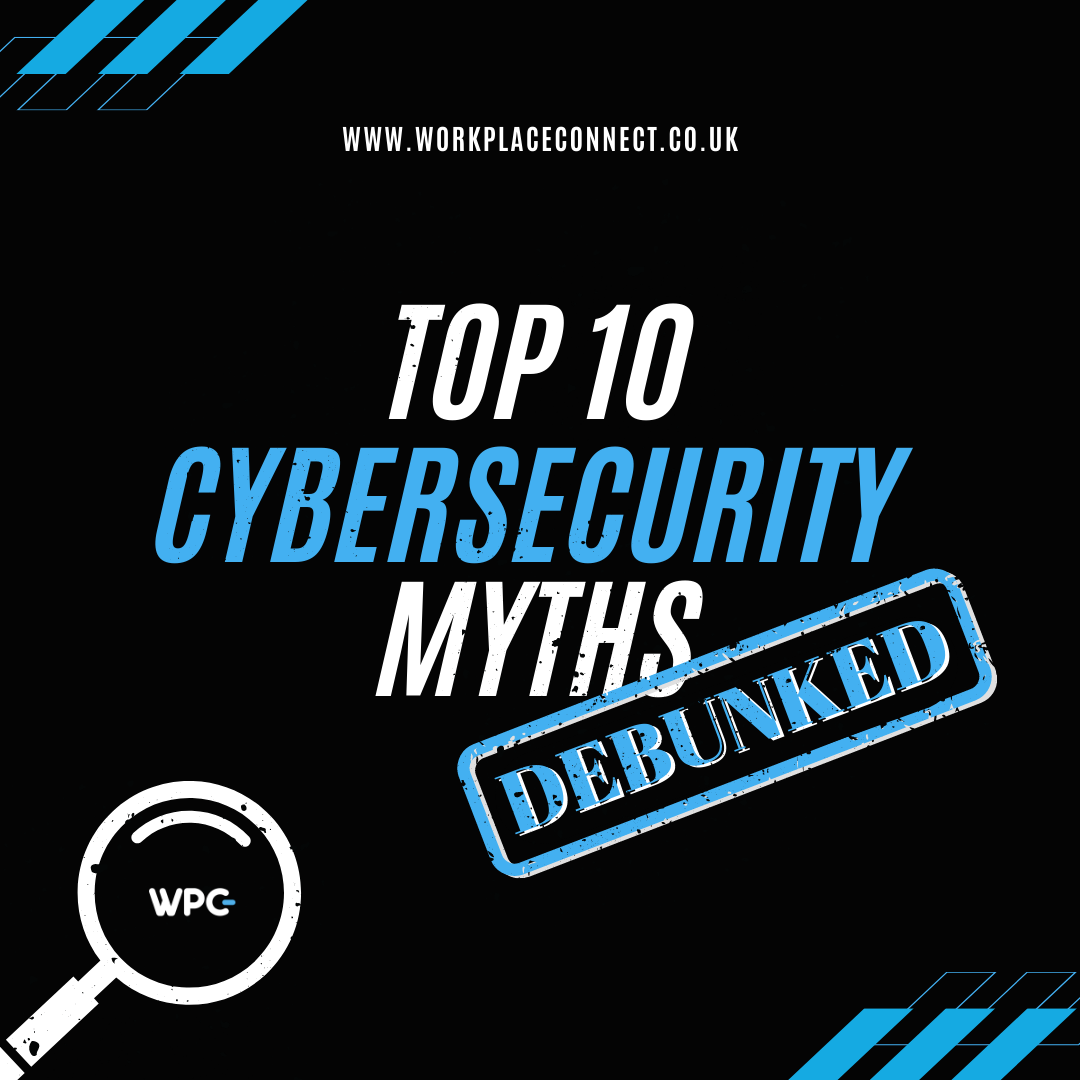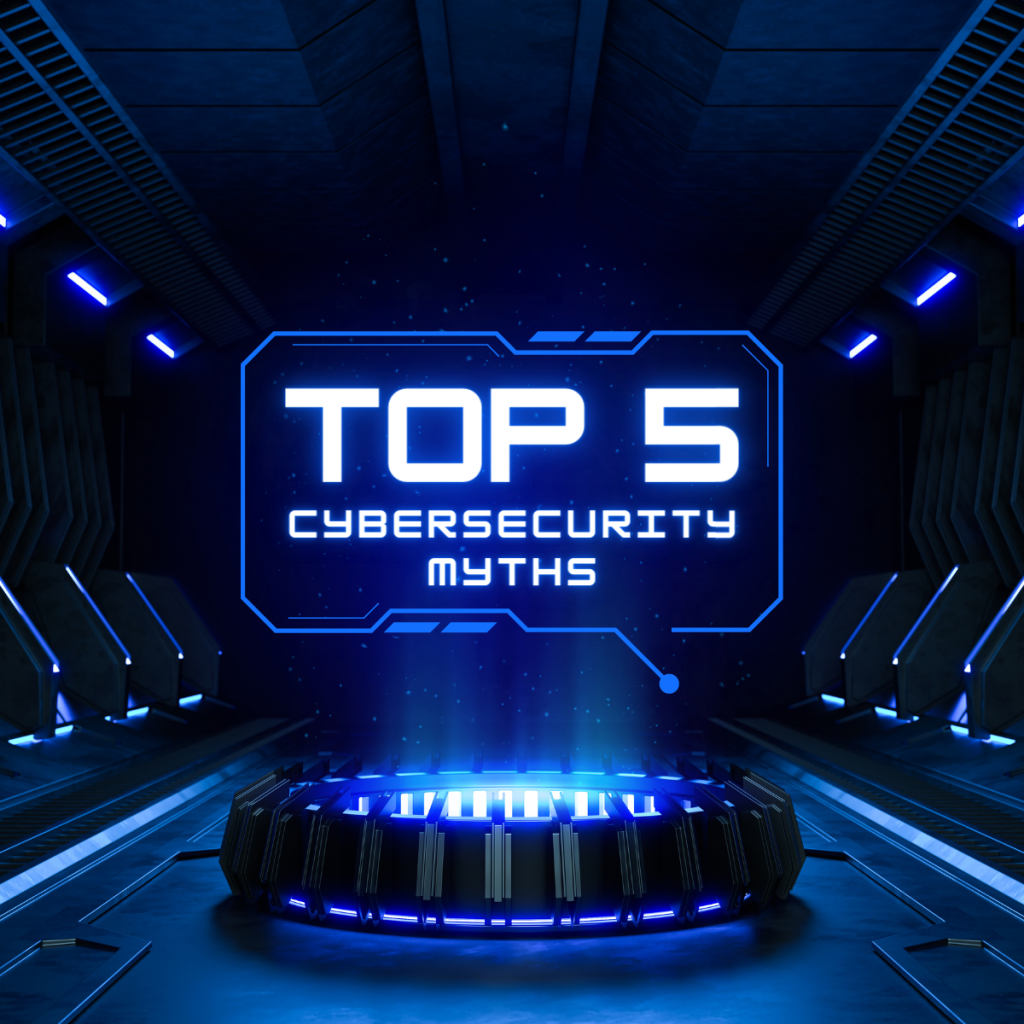Companies may occasionally operate in ways that are inconsistent with reality when it comes to cybersecurity because of numerous myths that are considered to be true. Businesses are more susceptible to ransomware, spyware, and phishing-like threats if they base any of their data security rules on cybersecurity myths, and do not examine their current policies by relying on the flaws shown by these misconceptions, or both.
Data breach occurrences seem to be an inevitable consequence of the incorrect assumption that fixing expected mistakes will protect businesses from cyber dangers. Companies that experience data exposure as a consequence of cyberattacks face fines under laws like the GDPR and financial losses as a result of ransom demands made by cyber attackers.
When following the cybersecurity fallacies, failure to develop a secure IT infrastructure has repercussions such as harm to corporate identification and disruption of business continuity. What exactly are these misconceptions, and what are the errors that cause businesses to become more vulnerable to cyberattacks?
10 Cybersecurity Myths
Let’s examine 10 cybersecurity fallacies and the truth behind them, which can lead businesses to disregard their IT infrastructures or, worse, lead them to believe that their current IT infrastructure is adequate.
Myth #1: Small and Medium-sized Companies Are Not Targeted By Cyber Attackers.
Because they are so little and believe nobody really cares about their data, Small and Medium-sized Businesses (SMBs) believe they have a built-in defense against cyber threats. But the reality is that SMBs are now one of the main picks for hackers and are no longer operating in the shadows.
Computer criminals frequently target random businesses. Instead, they wish to boost their earnings by attacking anything that evades their notice. SMBs are also invariably targeted by these attacks because they frequently lack professional IT teams and cutting-edge protection tools. In fact, it needs to be stressed that they are not strong enough in terms of cybersecurity, which is why hackers take them for granted.
Fact: A company is not immune to virus and hacking efforts because of its size. Hackers don’t make any distinctions when it relates to stealing data. Hence, don’t base your assessment of your vulnerability to attack on the size of your company.
Myth #2: Relying Solely on Strong Passwords is Enough To Prevent a Data Breach
Businesses believe that internal passwords generated using best practices will be sufficient to protect their workflow. However, that is also incorrect.
Fact: Data security can not anymore be guaranteed merely by passwords. Even though secure passwords are crucial, hackers may still find a method to crack them. Strong password software should only be the first step in a multi-layered security strategy that also includes database access monitoring, data masking, and two-factor authentication (2FA).
Myth #3: Only Specific Industries Are At Risk of Cyber Attacks
We now provide you with another list of false assumptions that need to be corrected. Several businesses believe that because of the sector they work in, cybercriminals won’t attack them. Once more, some businesses believe that their data is not valuable enough to be stolen. They are both in error.
Fact: Credit card numbers, address information, and other sensitive data are all present in every company and are valuable targets for theft. Because of this, entire businesses with pertinent sensitive data—rather than simply those in particular industries—are very alluring to cyber criminals.
Myth #4: Cyberthreats Are Always External
Cyberthreats do not always occur from the outside; instead, they are frequently designed with the goal of capturing the kingdom from within. Denying the reality of internal threats is one of the worst errors that has been made. Of course, threats and attacks should be carefully monitored and managed. Internal risks might result from a mistake made by a staff member who has not received sufficient cybersecurity training or from a purposeful attempt by an employee looking for financial benefit or retaliation against the firm.
20% of data breaches involve compromised credentials, according to IBM’s Cost of a Data Breach Study 2021. The third group with the largest cost, which is in the 20% range, is malevolent workers. According to the survey, internal threats cost businesses $4.61 million in 2021.
Fact: Cyberattacks may be started by you or a member of your company. Thus, it is recommended to adopt a variety of cybersecurity techniques, including privilege, access, and behavioral analytics. Moreover, security awareness training programs should be held periodically and staff should receive an education. Insider threats will be less of a threat as a result.
Myth #5: Strict Security Procedures Reduce Productivity
It’s a prevalent misconception that tighter security prevents even employees from accessing what they require, making it harder for hackers to access anything. In other words, it is thought that strict security measures like access restrictions and monitoring reduce work productivity. This is untrue, though, as lowering security puts your company at risk of being compromised. Additionally, a ransomware assault can halt operations and remove employees from their systems, prohibiting them from accessing data, networks, and other crucial data.
Fact: Good cybersecurity may prevent you from accessing certain websites, but it undoubtedly increases productivity.
The contemporary cybersecurity strategy is in place, allowing staff to concentrate on their jobs. Also, users don’t need to worry about spyware or virus attacks because the real-time protection security function built into their computer will quickly identify and reduce the risks.
Myth #6: You’ll be Safe by Using Free Antivirus and Anti-malware Software
Impossible. Without a doubt, anti-virus and anti-malware software is required to protect the security of your business, but they are insufficient on their own. Your IT infrastructure cannot be fully protected against cyber threats with just two types of software. As a result, you should have a complete cybersecurity solution that includes employee training in addition to the fundamental software and hardware support and a multi-layered data access security structure.
For the security of your data and systems, you must use antivirus software. Yet, you are mistaken if you believe a free security system would provide all the stringent security barriers and that they are sufficient. A limited number of entry points can be secured using a free tool. Hackers have methods for getting past antivirus software and compromising your PC. Hence, you should use a commercial security product that includes real-time protection, malware protection, website protection, a firewall, and other features rather than a free antivirus program.
Fact: You can only be protected against a select few risks with free antivirus software. An advanced and powerful antivirus is necessary to defend yourself from the newest and most dangerous online dangers.
Myth #7: Putting Files in the Trash Bin is Enough
A file that you ‘delete’ from your computer doesn’t actually go away. To put it another way, you are not actually removing anything when you send a file to the Recycle Bin and subsequently empty it. Instead, a permanent trail of data will be left behind on your hard disk, such as in the temporary files folder.
With the use of freely accessible file recovery tools, third parties can quickly recover this trail, often known as residual data or data remanence. A similar problem exists with your browser history, which cannot be completely erased by just clearing it in your web browser.
Fact: The best method for permanently deleting files and data remnants on active computers is to utilize data-wiping software. As a hard drive reaches the end of its useful life, it is advised to completely wipe it; physically destroying it is insufficient for data sanitization.
Myth #8: Investing in Cybersecurity Measures Are Costly
Cyberattacks cost businesses millions of dollars every day, but despite this, businesses continue to debate whether it is wise to invest in cybersecurity. Data security is frequently neglected by most businesses. They only realize the value of security measures once they’ve been the victim of a cyberattack.
Fact: Compared to the price a business must pay when its servers and network are compromised, a competent cybersecurity solution is considerably more expensive. Contemporary security solutions are made to shield you from the most recent dangers. In addition, businesses can take further security precautions such as creating strong passwords with a password manager, storing data in an encrypted vault, utilizing identity protection technologies, and more.
Myth #9: If You’ve Never Been Attacked, You Don’t Need Cybersecurity
Even if you haven’t had a hack or data breach, that doesn’t imply you’re safe or won’t ever be a target. Also, it does not imply that your security procedures are robust enough to deter hackers. You may just be lucky, yet you don’t know when the good fortune will end. You never know when you can become the target of a cyberattack or become the next one, as cyber threats and hacking tools are developing and becoming more complex.
Fact: It’s important to keep your security practices in check and develop a strong security strategy to identify any existing weaknesses and mitigate potential attack attempts before they can cause any harm since you could be on the list of targets for cyber attackers.
Myth #10: The IT Department is Solely Responsible For Cyber Security
One of the most common cyber security misconceptions is that it is the job of the company’s IT staff or an external MSP to maintain a robust security posture. The cyber security of a company, however, is only as strong as its weakest link. 95% of cybersecurity incidents are the product of human error, according to IBM research.
Fact: Although the IT department is in charge of implementing security measures, they are not the only ones. Every team member is accountable for preventing a company from becoming a victim of a cyberattack.
Tackling Cyber Security Myths With Workplace Connect
As security leaders in the UK, Workplace Connect possesses the necessary expertise and experience to assist you in educating your end users about prevalent cybersecurity myths and inculcating a more comprehensive cybersecurity approach.
If you wish to learn more about our innovative security solutions, reach out to one of our specialists today!







